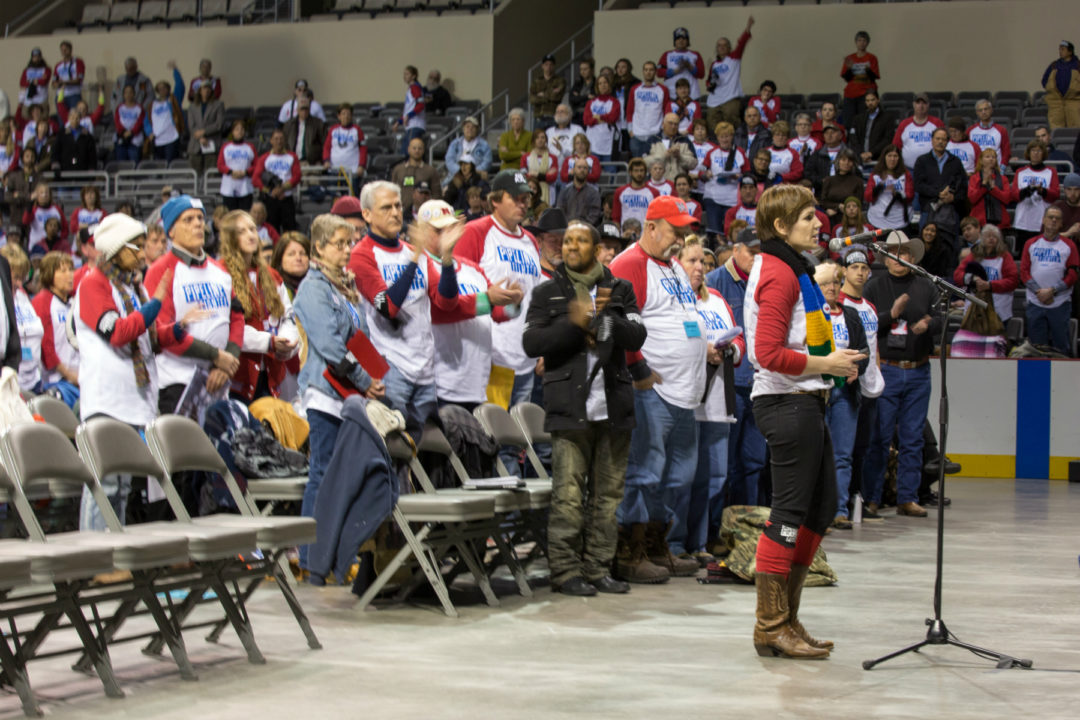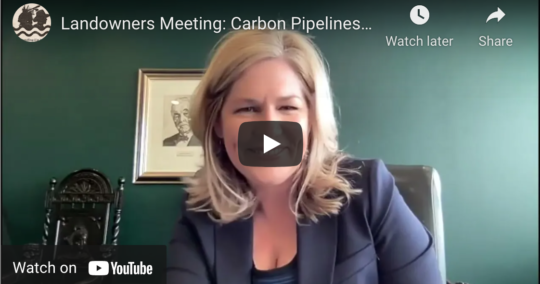

TransCanada / TC Energy needs permits under the Clean Water Act to be issued by the U.S. Army Corps of Engineers and state agencies in Montana, South Dakota and Nebraska to construct Keystone XL across U.S. waterways. The Army Corps and state agencies will hold telephone-based public hearings this week to hear testimony as public comments.
There is still an opportunity to join the Montana public hearing (via Zoom/phone) on Nov. 16th. But in case you missed the Army Corps telephone hearings Sept. 28-Oct. 1, you can still submit a written comment until the Comments Deadline: October 13, 2020:
- Sign on to Bold’s comment or submit an online comment.
- Submit your written comment directly by email: nwo-kxl-pn@usace.army.mil
- Submit a voicemail comment: (402) 995-2027
- Comments can be mailed (postmarked by Oct. 13) to:
South Dakota Regulatory Office
28563 Powerhouse Rd, Room 118
Pierre, SD 57501
Montana State Public Hearing: Nov. 16
The state of Montana and its Department of Environmental Quality agency have opted to host a separate public hearing on TransCanada’s water permits for KXL, on Monday, Nov. 16, 4:00-8:00 p.m. Registration for members of the public to give testimony at the Nov. 16 hearing (via Zoom/phone) is open now via Eventbrite:
Written comments to the Montana DEQ on the KXL permits are accepted until Nov. 30, 2020 at 5:00 p.m:
http://deq.mt.gov/Public/publiccomment
While the focus of these reviews is the pipeline’s direct impacts to water crossings, the factors being considered and that public comments can address are more broad and general, including:
-
- Is Keystone XL in the “public interest”?
- Does Keystone XL serve “in general the needs and welfare of the people”?
- Pipeline Safety, Oil Spills & Environmental Concerns, Water Quality
- Climate Change
- Cultural Values
- Economics
From the U.S. Army Corps: “The decision whether to issue a permit will be based on an evaluation of the probable impacts including cumulative impacts of the proposed activity on the public interest. That decision will reflect the national concern for both protection and utilization of aquatic resources. The benefit which reasonably may be expected to accrue from the proposals must be balanced against its reasonably foreseeable detriments. All factors which may be relevant to the activity will be considered including the cumulative effects thereof; among those are conservation, economics, aesthetics, general environmental concerns, wetlands, cultural values, fish and wildlife values, flood hazards, flood plain values, land use, navigation, shoreline erosion and accretion, recreation, water supply and conservation, water quality, energy needs, safety, food production, and, in general the needs and welfare of the people.”
TESTIMONY TIPS: THE BASICS
- Dial-in prepared! 3 minutes of speaking time = approx. 450 words
- State your name, where you’re from, that you’re opposed to the water permits, and urge the Army Corps and state agencies to reject the permits.
- Think about just 2-3 key points to focus on in your testimony. Keep your message clear, specific, and on-point.
- You don’t need to fill the full 3 minutes to make a powerful point and deliver your message — it’s important that all our voices are heard, and counted in opposition.
TESTIMONY TIPS: MAKE IT PERSONAL
- Are you a landowner on the pipeline route? Speak about how KXL could affect bodies of water on or near your farm/ranch, including rivers like the Niobrara and Missouri, the Ogallala aquifer, and private wells.
- Voice your concerns about a tarsands spill into groundwater/wells, and effects on livestock, irrigation, your livelihood, your homes and drinking water wells. Tarsands sinks in water, and can be nearly impossible to completely clean up after a spill into a river or other waterway.
- Are you a Water Protector? Speak about how KXL threatens some of the 770+ local bodies of water it would cross that you use for drinking water, ceremony, fishing, recreation — both from pipeline spills, like 1 million gallons into the Kalamazoo River in 2010 ($1.2 billion & still not fully cleaned up) — and from the especially heightened climate impacts from burning dirty tarsands oil.
TESTIMONY TIPS: DEEPER DIVE
Cultural Values / Public Interest: The Keystone XL pipeline project would keep us rooted in the past, instead of moving us towards a climate-safe future powered by clean energy. It was a bad idea when it was proposed a decade ago (and rejected by the Obama administration as not in the U.S. national interest) — and it’s an even worse idea today.
Pipeline Safety & Oil Spills: TransCanada has a terrible pipeline safety record: over 20 spills on its Keystone 1 pipeline since 2008; 3 Corrective Action Orders issued by federal regulators; Government Accountability Office investigating Keystone pipeline spills and PHMSA’s oversight. The risk of oil spills is too great for a project like this to move forward, threatening waterways at more than 770 water crossings along the proposed route through Montana, South Dakota, and Nebraska.
Climate Change: If approved, KXL would be responsible for at least 181 million metric tons of carbon dioxide equivalent (CO2e) each year, comparable to the tailpipe emissions from more than 37.7 million cars or 51 coal-fired power plants. Building KXL is incompatible with a goal of reducing greenhouse gas emissions at a level necessary to avoid apocalyptic impacts of global warming above 1.5-degrees Celsius, as set forth by the IPCC report & Paris Climate Agreement.
Water Quality: A tarsands spill from the Keystone XL pipeline into the Missouri River could affect drinking water for millions. A spill into the Ogallala aquifer could be impossible to clean up, and impact irrigation for 30% of all U.S. agriculture. The Rosebud Sioux Tribe, the Fort Peck Tribes, Cheyenne River, Yankton Sioux and others have opposed these permits, and demanded TransCanada move the pipeline away from tribal water resources (just like DAPL).
Economics: Tarsands Isn’t Inevitable: The market conditions for tarsands oil transport and export have changed in the decade since KXL was first proposed, and the current market analysis does not support further tarsands extraction or transport. KXL is not needed and the development of the tar sands is not inevitable.
Outdated / Inadequate Reviews: The Army Corps is basing this review on outdated and unacceptably inadequate reviews and spill response plans that were conducted during prior reviews by the State Dept., which were necessary under the National Environmental Policy Act, and Endangered Species Act.
VIEW TRANSCANADA’S FULL APPLICATIONS FOR KXL WATER PERMITS:
https://usace.contentdm.oclc.org/digital/collection/p16021coll7/id/15246
From U.S. Army Corps website:
Section 404/10 IP Public Hearings (2020)
The Omaha District will conduct a total of three virtual public hearings on September 28, 2020; September 29, 2020; and October 1, 2020. The public hearings are intended to provide each of the three states (Montana, South Dakota, and Nebraska) equal opportunity for attendance of interested parties specific to those states. All three hearings will take place from 4:00 to 8:00 p.m. (Central Standard Time). Due to the current COVID-19 Pandemic, the public hearings will be conducted virtually via teleconference.
During the public hearings, interested parties will be afforded the opportunity to present their views, opinions and information on the proposed project. Those who wish to speak will be asked to provide their name to the AT&T Event Host and placed in a numbered queue. Phone lines will be opened and closed one at a time in sequential order. Each individual wishing to make verbal comments shall be given three minutes. Due to the expected number of attendees, we request that groups, where appropriate, consolidate comments and elect a representative speaker.
Each virtual public hearing will be recorded and transcribed by a third-party court reporter for the official record. The official record will remain open for 10 days following each hearing for the submission of written comments. These comments will be used to carefully weigh all relevant factors, including balancing our Nation’s historic and ecological resources with the need for reliable energy. The input received will be considered fully in the permit evaluation process and be used to inform the necessary National Environmental Policy Act analysis and documentation.
The following provides information to access each of the public hearing teleconferences:
September 28, 2020 (4:00-8:00 p.m. Central Time)
Dial-in: 888-251-2949 or 215-861-0694
Access Code: 4691237#
Public Hearing Agenda (September 28, 2020)
Participants may join the teleconference 5 minutes prior to the start time of 4:00 p.m. Agency officials, including those from the Omaha District Montana Regulatory Office, will be on the call to hear public comments.
The Montana Department of Environmental Quality (MDEQ) will review the proposed project for state certification in accordance with the provisions of Section 401 of the Clean Water Act. The MDEQ will issue a separate public notice and will schedule a separate public hearing for the project. More information can be found at http://deq.mt.gov/Public/notices/wqnotices.
September 29, 2020 (4:00-8:00 p.m. Central Time)
Dial-in: 888-251-2949 or 215-861-0694
Access Code: 4691237#
Public Hearing Agenda (September 29, 2020)
Participants may join the teleconference 5 minutes prior to the start time of 4:00 p.m. Agency officials, including those from the Omaha District South Dakota Regulatory Office and the South Dakota Department of Natural Resources, will be on the call to hear public comments.
October 1, 2020 (4:00-8:00 p.m. Central Time)
Dial-in: 888-251-2949 or 215-861-0694
Access Code: 4691237#
Public Hearing Agenda (October 1, 2020)
Participants may join the teleconference 5 minutes prior to the start time of 4:00 p.m. Agency officials, including those from the Omaha District Nebraska Regulatory Office and the Nebraska Department of Environment and Energy, will be on the call to hear public comments.
If technical assistance is needed during any of the teleconferences, please call the AT&T Help Desk at 888-796-6118.
To request accommodations under the Americans with Disabilities Act, please call (402) 995-2027 or email nwo-kxl-pn@usace.army.mil at least 72 hours in advance of a public hearing teleconference.
PROJECT LOCATION: The portion of the proposed Project located within the United States would be located in Montana, South Dakota, and Nebraska, connecting to the existing Keystone Cushing Extension pipeline, which extends from Steele City, Nebraska, to Cushing, Oklahoma. In total, the Project would consist of approximately 1,209 miles of new, 36-inch-diameter pipeline, with approximately 327 miles of pipeline in Canada and approximately 882 miles in the United States (U.S.). The Project would cross the international border between Saskatchewan, Canada, and the U.S. near Morgan, Montana, and would include pipeline generally within a 110-foot-wide temporary construction right-of-way (ROW) and a 50-foot-wide permanent ROW in Montana, South Dakota, and Nebraska. The approximate start of the Project in Montana is located at the following coordinates: 48.99, -107.54. The approximate end of the Project in Nebraska is located at the following coordinates: 40.04, -96.99.
PROJECT DESCRIPTION: TransCanada proposes to construct a pipeline system and ancillary facilities (e.g., access roads) that would transport Western Canadian Sedimentary Basin heavy crude oil from its existing facilities in Hardisty, Alberta, Canada, and Bakken crude oil from an on-ramp in Baker, Montana, to Steele City, Nebraska. There are a total of 729 locations along the pipeline route where wetlands and waterbodies would be impacted by the pipeline crossing, access roads, and temporary workspace. The majority of impact to wetlands and waterbodies would occur from open-trench crossings (temporary excavation and side-cast filling) of the pipeline. The fill material in aquatic resources would consist of temporary side-cast trench soil material, rock, culverts/flumes for access crossings, and temporary construction mats. Aside from pipe ditching/trenching, timber mats, and temporary and permanent access roads, there are no other activities proposed that result in a discharge of dredged or fill material in aquatic resources. The Individual Permit Application will soon be available online at https://go.usa.gov/xfHFT



